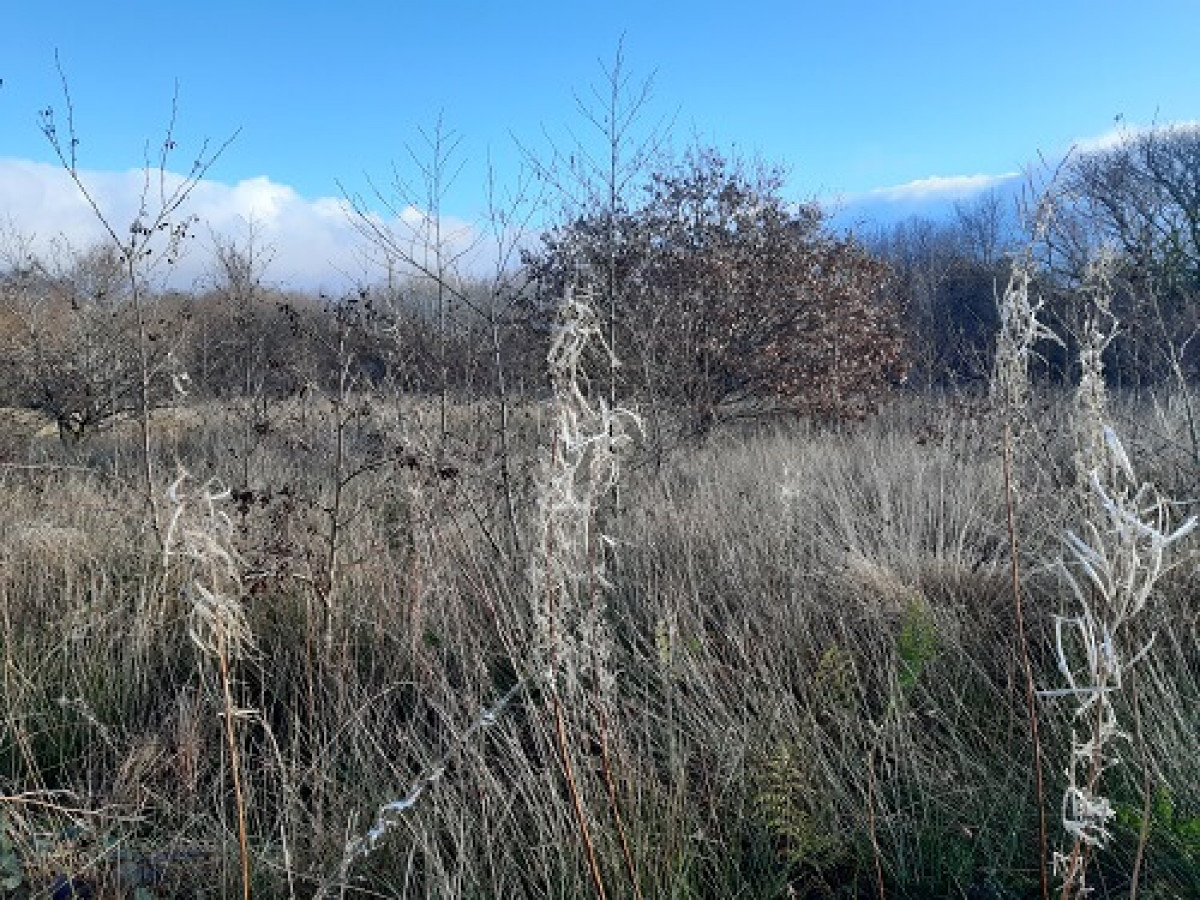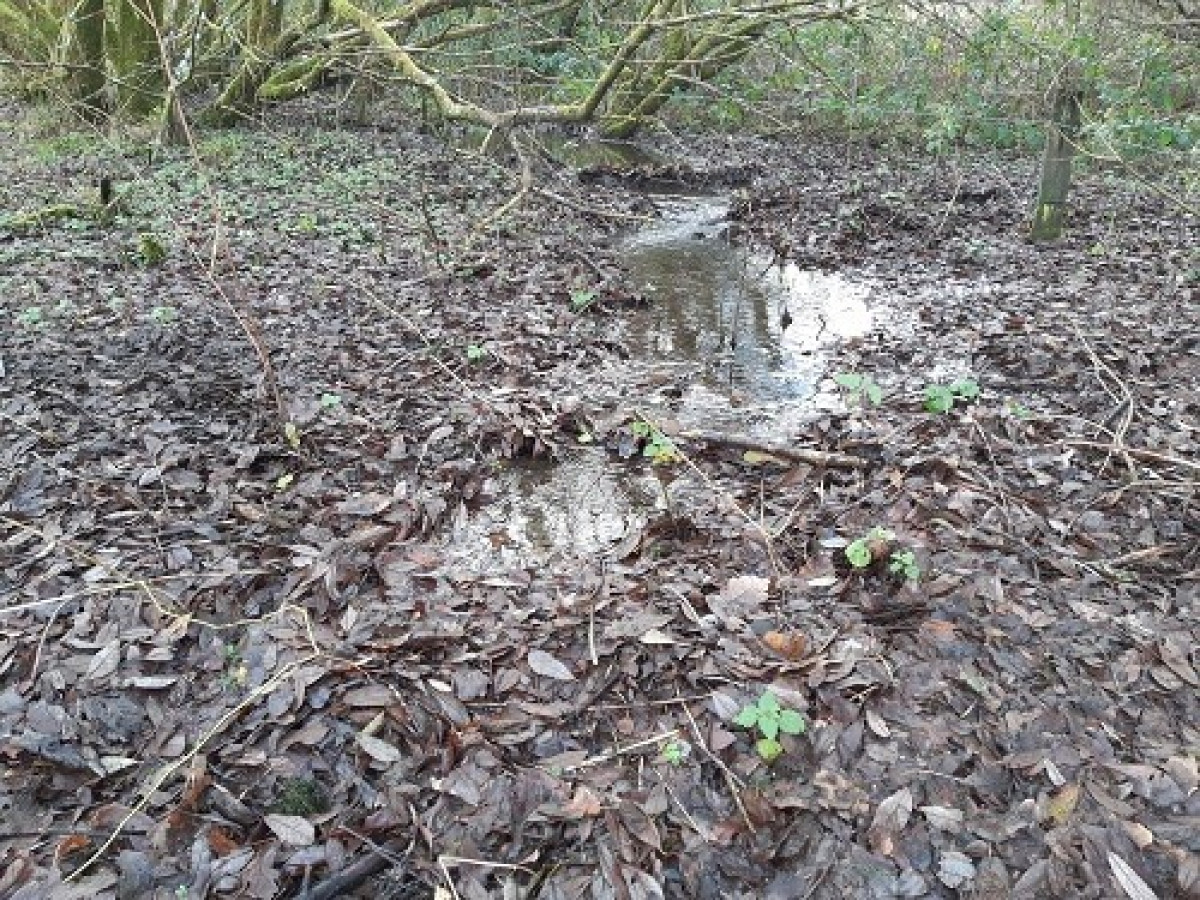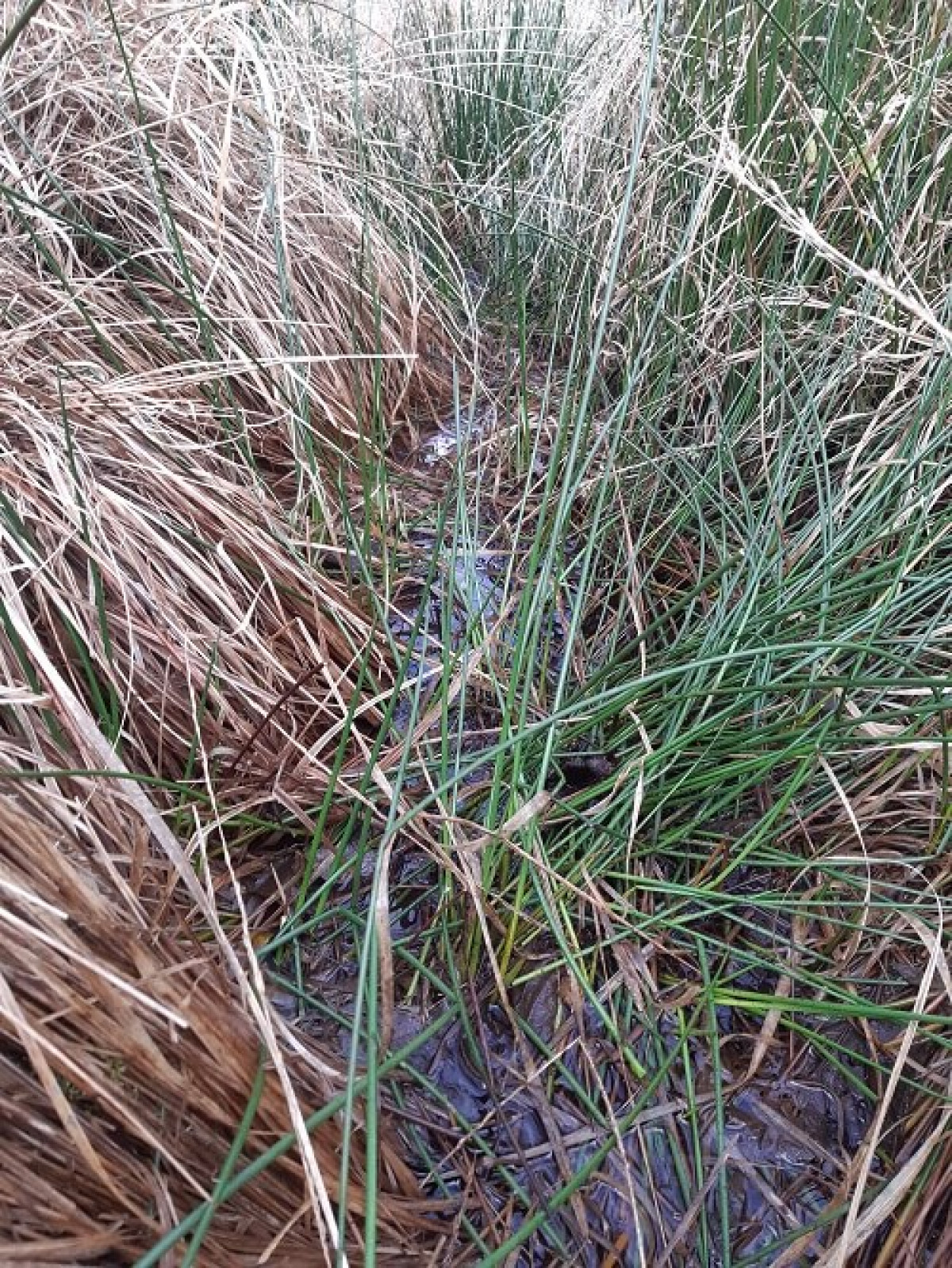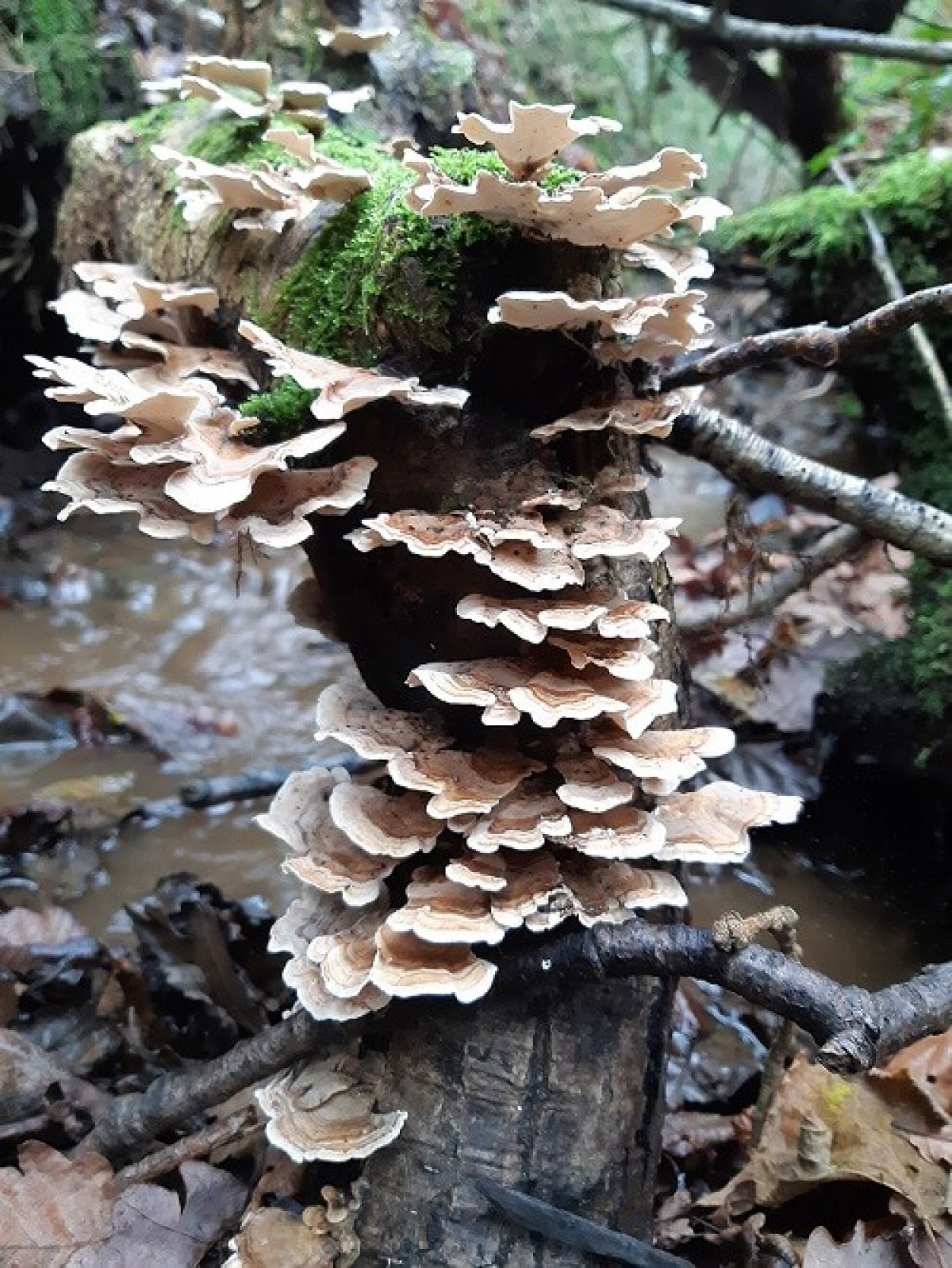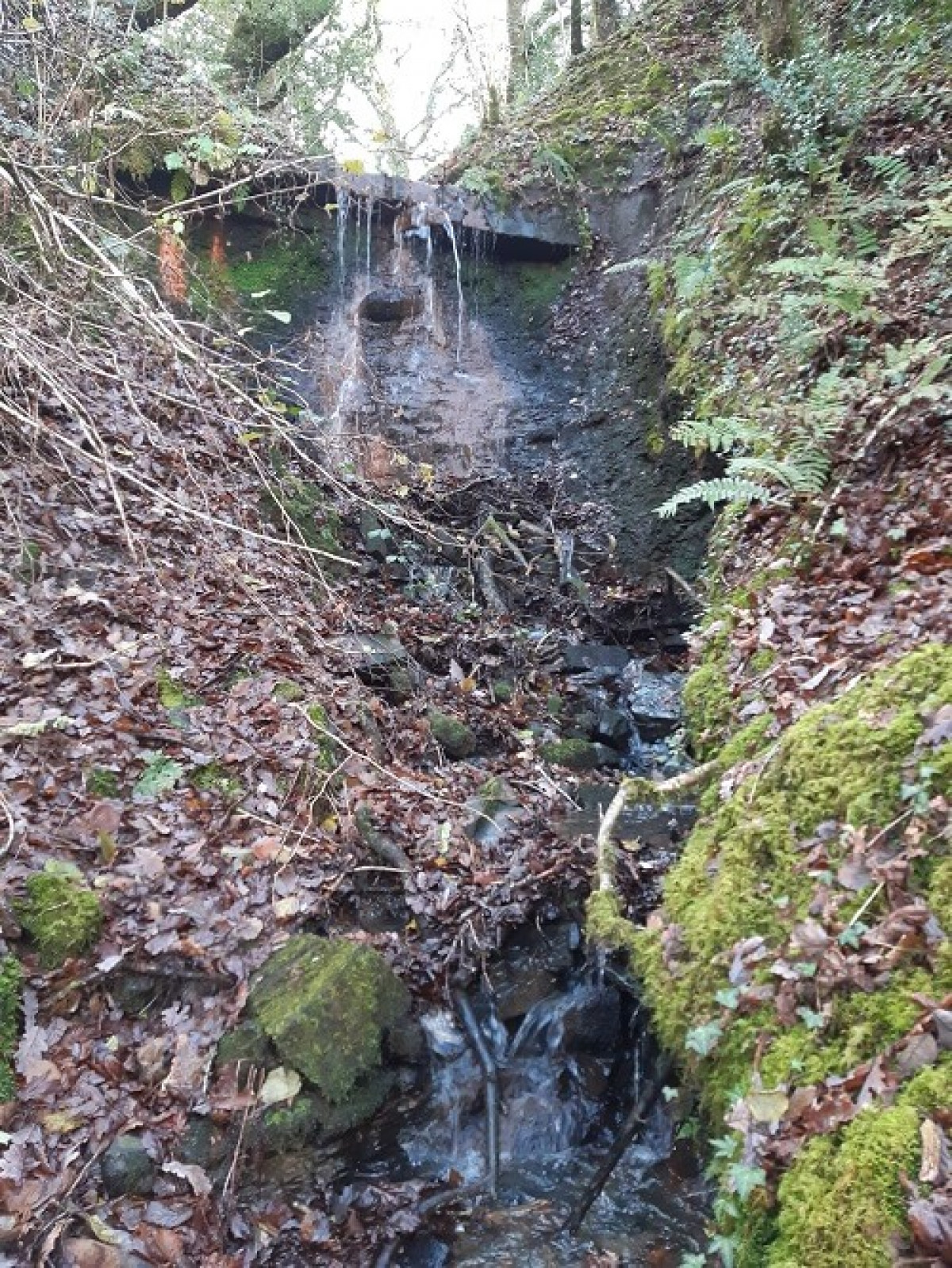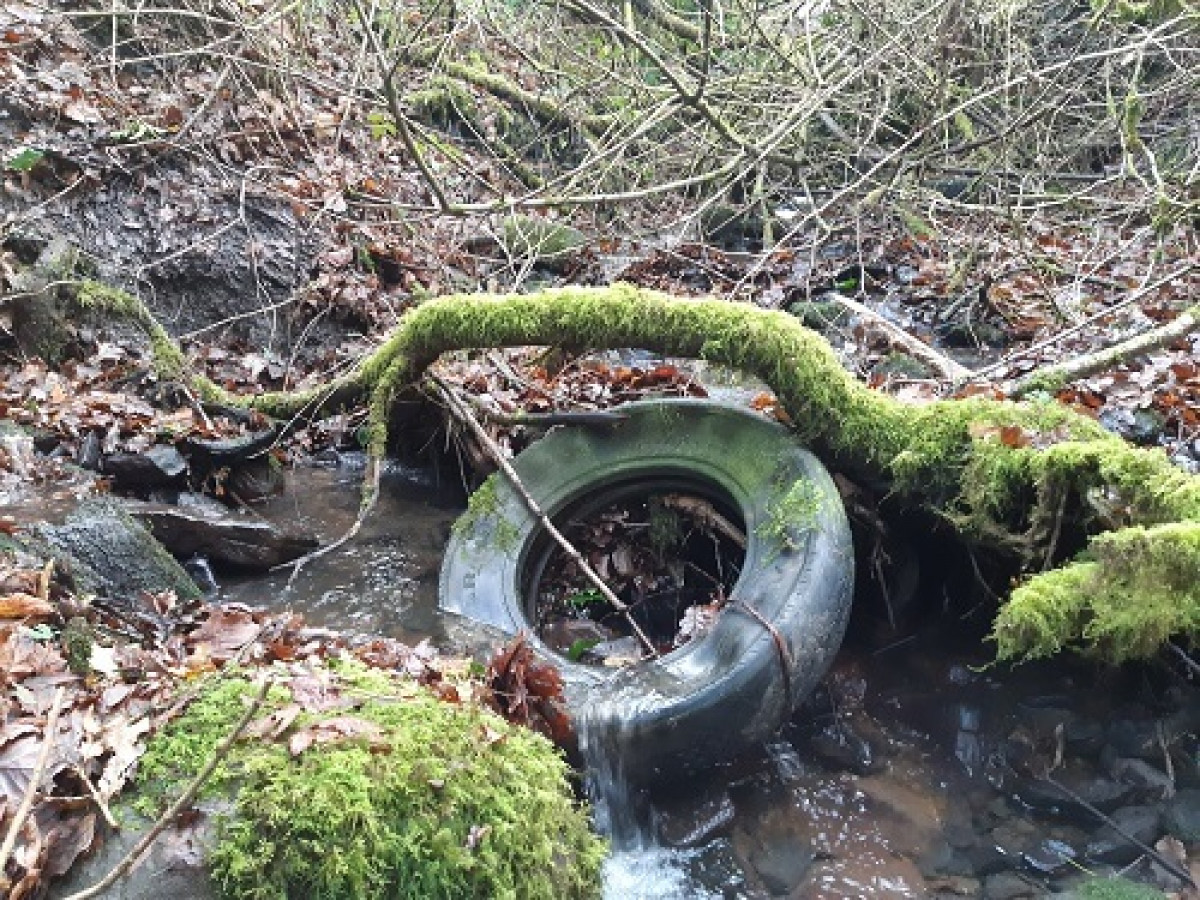15 December 2021
How Water Moves Across The Landscape At Steenbergs Wood In South Wales
As he walks across the woodland, Axel discovers about the water processes at work - groundwater flows, streams and transpiration and how trees create clouds and flying rivers that flow across the heavens.
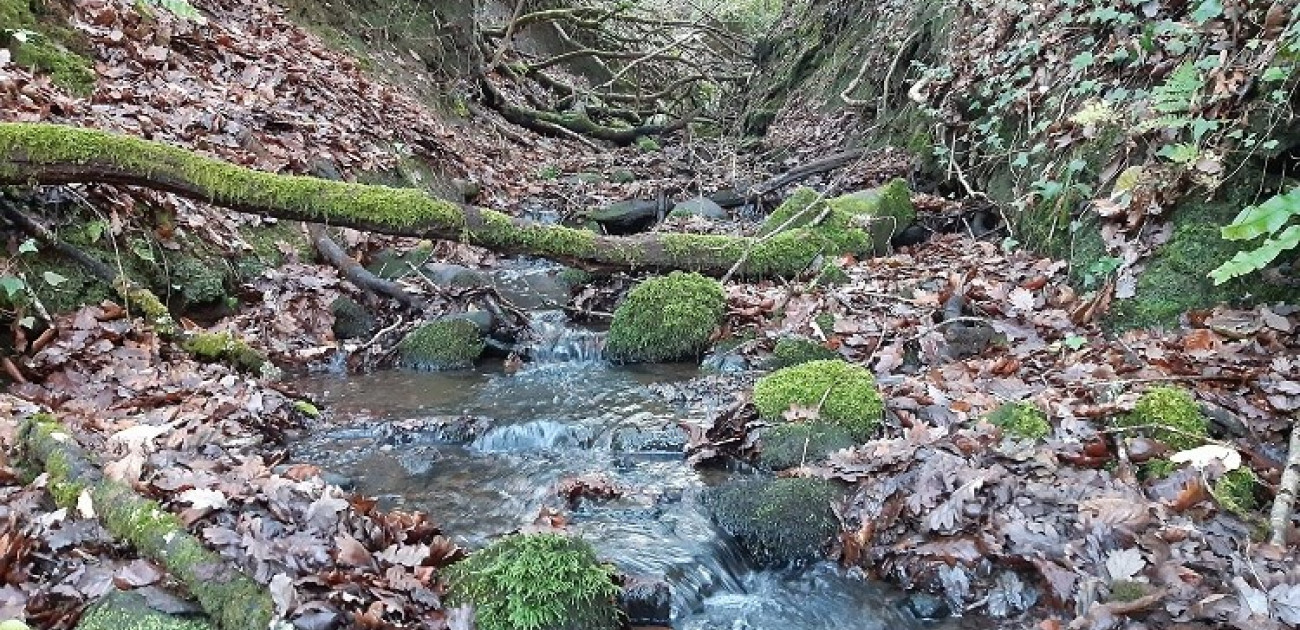
Last week, I walked our Welsh woodland with Rob Low, a hydrologist for Rigare, so he could look at the ground and advise us on the water aspects of the land. It’s part of our investigation of the physical processes that underpin the environment – water is a key component of our learning process.
Siân Phillips, who was born on the neighbouring farm of Tŷ-mawr, writes in Private Faces & Public Faces, “they say this place is wetter than Borneo”. If so, then this is a lesson to us all, because Borneo is suffering from a 20% drop in rainfall over the past 50 years, coinciding with the chopping down of half its trees for timber and palm oil.
Sure enough, the ground was waterlogged in places and the heavens opened to soak me through on the Thursday. Friday was glorious, if somewhat crisp.
The trees have been planted on moorland that is a catchment for 5 streams that then flow into the Garnant, which in turn flows into the Amman and Loughor rivers (afonydd Aman a Llwchwr). 4 of these streams flow across the land and have been augmented by an extensive drainage network built in the nineteenth century that, quite unsuccessfully, tries to drain the waun, or moor.
In places, the water table breaches the surface in December, with a thin layer of water running over the surface before going to ground again before coming out in a spring or being caught in a drainage ditch. In one field, the path is waterlogged with 50cm or so of standing, peaty water between the tussocks of Molinia grass. Elsewhere, the wet conditions result in patches of Juncus rushes, more Molinia grass and lots of bright green, spongy marsh hair moss.
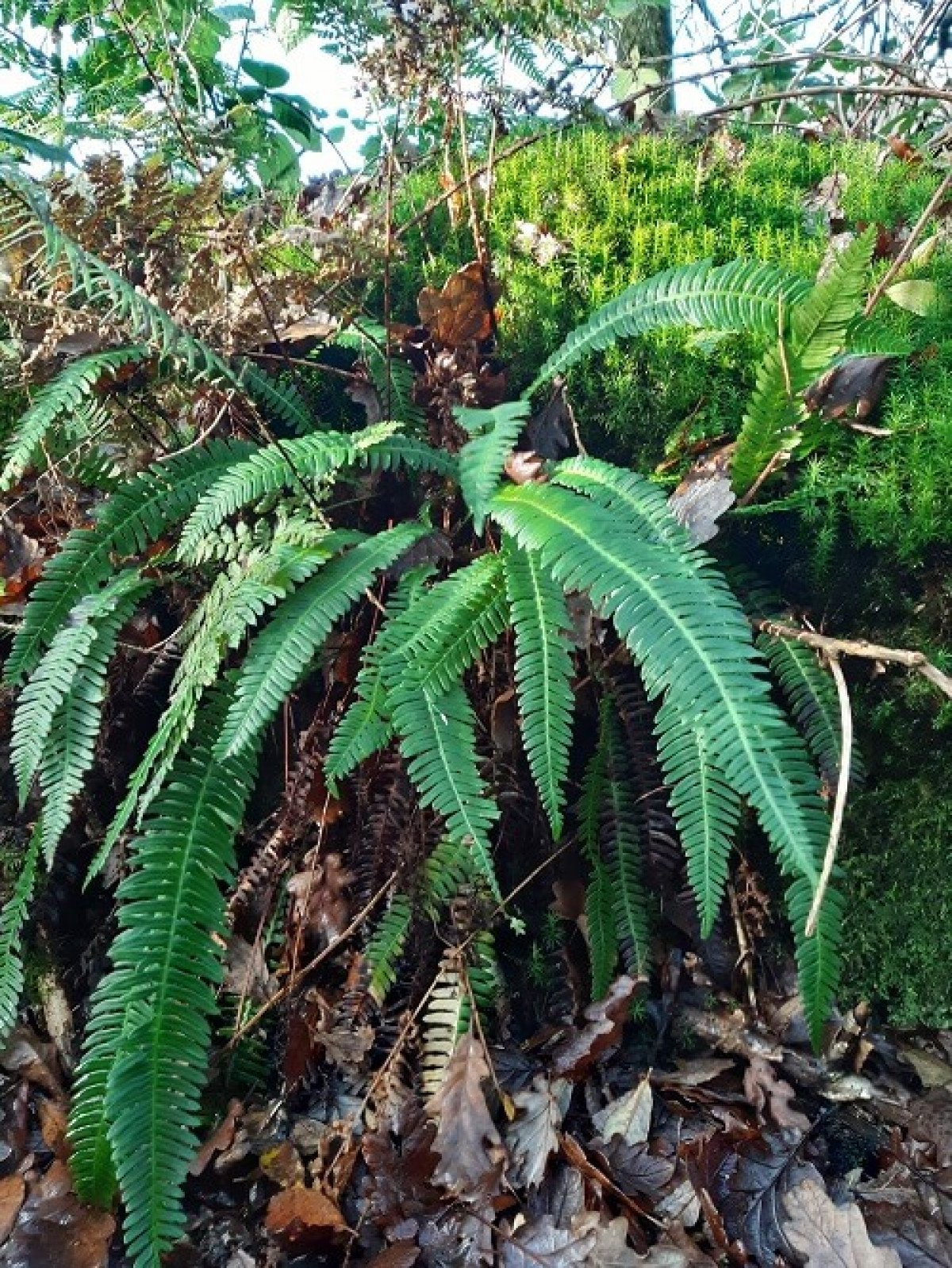
Along the drainage ditches and beside the streams, sallows have naturally seeded and taken over, covered in thick layers of hairy green moss. Because of the wet ground, these willows have flopped into a bowed shape, arching out from their centres and branches curving upwards. Elsewhere, planted alder are growing vigorously and, in the better drained patches, there are self-sown sessile oaks that are 50 – 100 years old.
At this time of the year, the streams are full, gurgling and rushing over the stones as they race downhill. In places, thousands of years of flow have cut steep ravines through the ground. There is even a waterfall with a 5 metre drop down into the valley – that was a massive surprise. Elsewhere, streams cut down the steep valley side or, to the south, along the edge of the older trees in Coed Cae which forms our border with Tŷ-mawr. In the streams, there were fallen branches with amazing fungal growth, leaves backed up to create pools, and the ubiquitous couple of tyres, all of which create leaky dams that slow the flow of water down into Cwmgarnant - it felt like no-one had been down here in the streams for decades, a lost space.
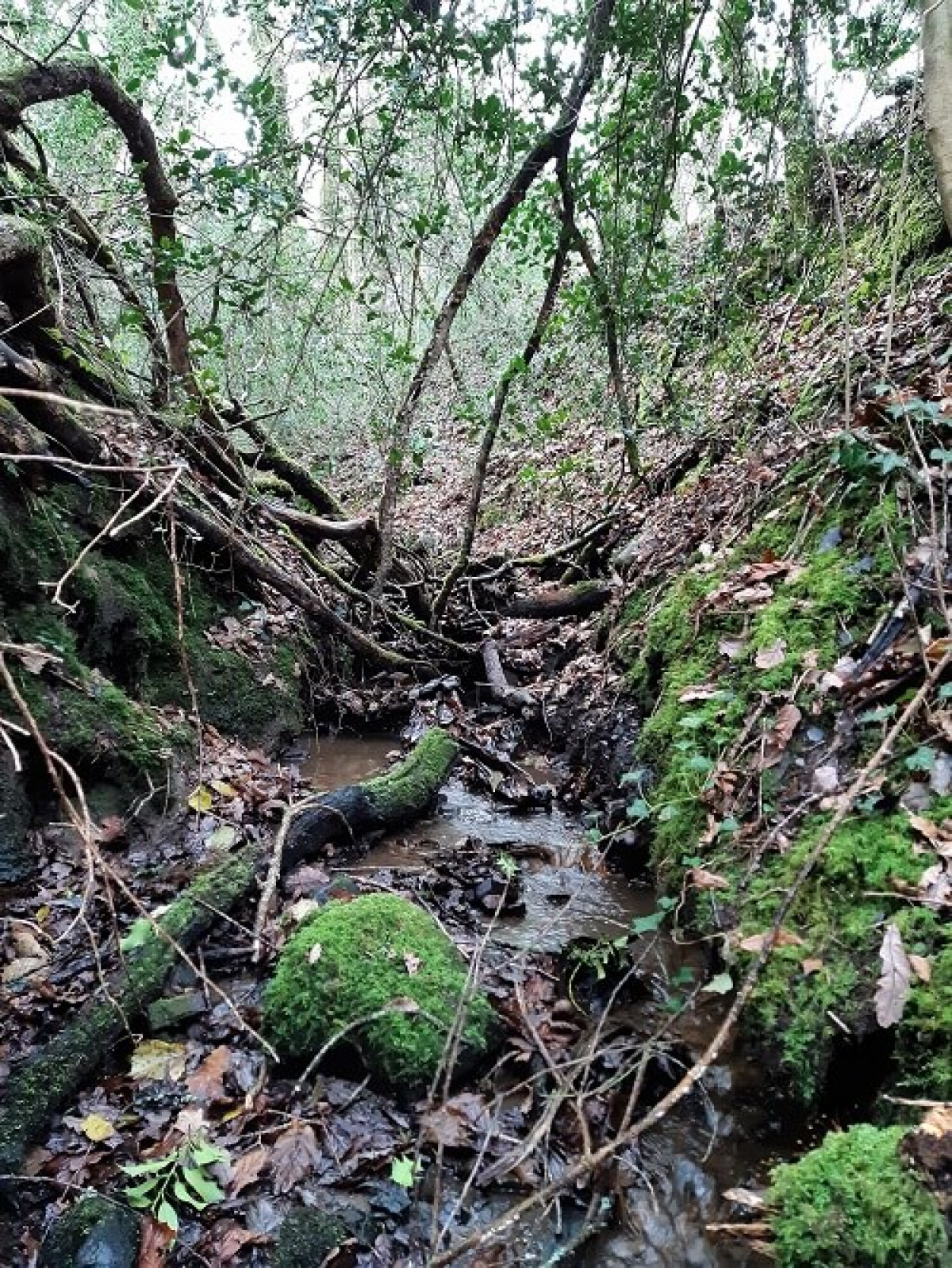
It is a start, there is a lot more to investigate. Sophie and I will need to check where there is standing water or sodden patches in the summer, which would mean there is a spring or the water table sits above the land. Also, we will have to check the flow of the streams in the summer, as certainly at least one was not flowing when we visited in July and September.
It is not just about the visible water on the land surface or in the streams, but it is also about the part our trees play in regulating rainwater through intercepting surface water flow and how they create rainfall via transpiration.
Trees not only regulate the rainwater that falls, reducing run-off and flooding, but also create clouds through transpiration. This process collects the water that falls as rain, which originated from seawater, then releases tiny water droplets back into the air to create clouds, so shifting water across the land by a repeating cycle of soaking up rainwater, transpiration and cloud creation to make more rain, etc. etc..
So, the rain that soaked me on Thursday is the start of a flying river that flows water across the sky from Wales to Scandinavia, then across Siberia into northern China, where 80% of its rain comes from Scandinavia and Siberia, a journey that began one cycle back here in South Wales. So, the Betws hills should relish the fact that their rain seeds this aerial waterway across the Eurasian landmass.
Transpiration is a really, physical force.
In July, we visited our Garnant woodland. It was a hot week with temperatures in the mid-20s and above. As I walked through the wood, I was dripping, becoming an unpleasant damp mess with shirt and trousers clinging to me. I thought it strange as I am quite fit, running three times a week, but thought no more of it.
What we were physically experiencing was the amazing power of transpiration – of how plants and trees intercept water, drawing it up through their root system and then release it during the daytime through their leaves. Trees transpire a whopping 25 tonnes per hectare of water every day – no wonder I was dripping!
Later, Sophie and I visited the wood again, but in September, and this time we noticed how there was a heavy dew on the grasses and other low plants in the morning, so the bottoms of our trousers were soaking within seconds. This is a different process whereby moisture in the air condenses out when it cools and collects on surfaces like the leaves of the grasses and other plants.
So, our wood on wet moorland has water and water processes at its ecological core.
